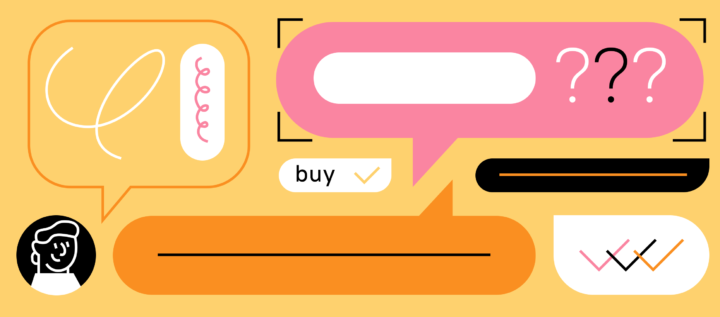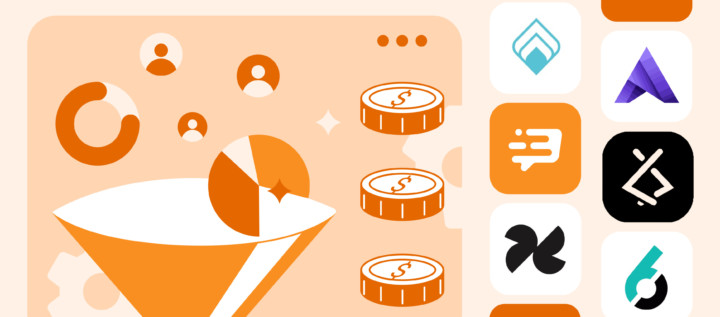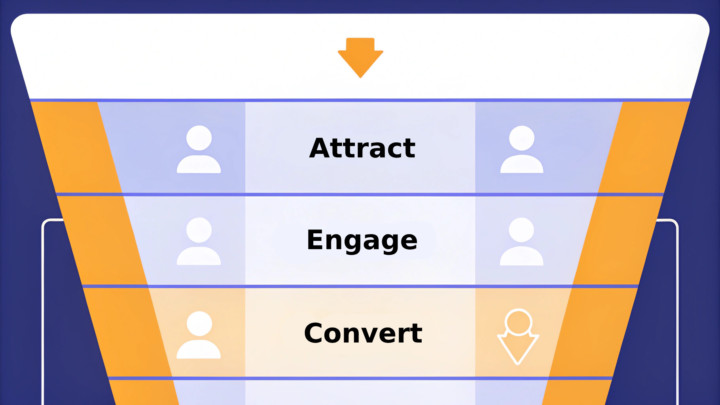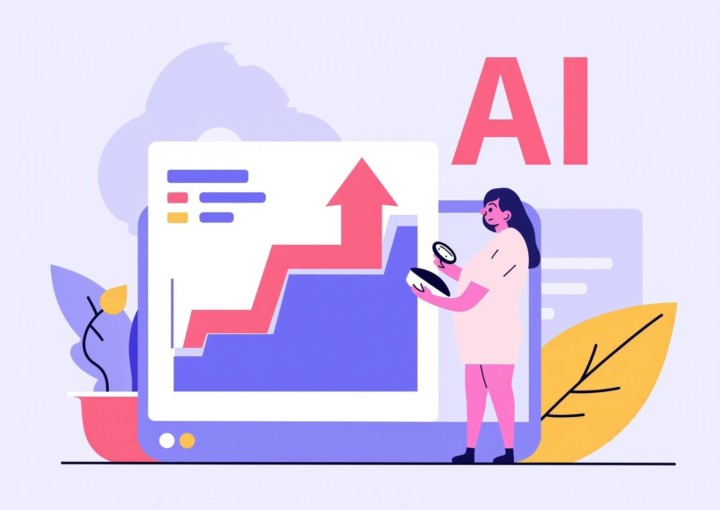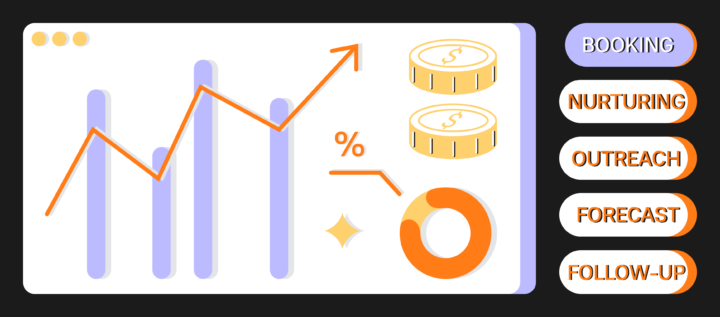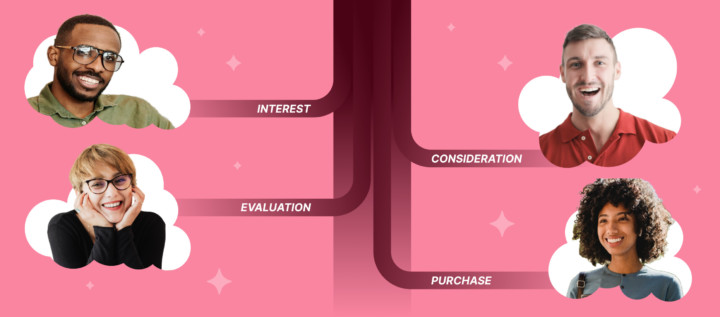How Online Stores Can Increase AOV Using Cross-Sell Techniques
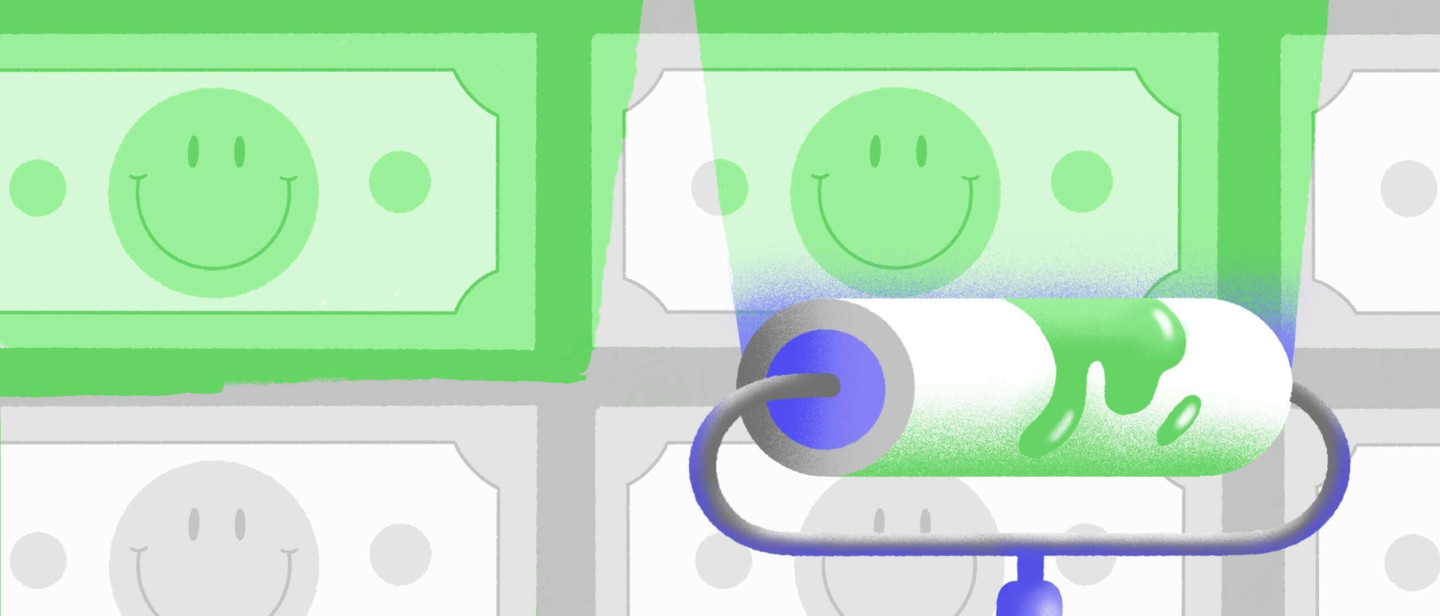
Growing AOV (average order value) is one of the ways to increase your online store’s turnover. This means getting customers to spend more. You can either do this using upsell or cross-sell techniques.
Upsell and cross-sell methods may significantly boost your revenue, though they don’t require huge investments. Amazon, for example, makes up to 35% of their income using them. Sections like “Customers who bought this item also bought” and “What other items do customers buy after viewing this item?” help Amazon generate substantial incomes.
Here’s what we’ll talk about in this post:
- what upsell and cross-sell are;
- why they are different;
- what other techniques there are beside product recommendations;
- what you should consider to sell more.
What is cross-sell?
In a nutshell, it’s a sales uplift technique. Let’s say a seller offers you a product that will complement the one you are buying. A cashier person at McDonald’s offering fries in addition to your order is a classic cross-sell case. Fries are cheaper than a hamburger with a higher margin for a company.
Cross-sell doesn’t mean flogging high-margin products. Consider this an opportunity to help your customer find products they will make good use of. You’ll help them cover extra issues.
A customer needs a protection cover for a smartphone or some care products for leather shoes. Considering customer needs is a sign of care, not just increasing your AOV.
If you’re looking for a shorts on Asos, you’ll see a suggestion to buy the look:

What is upsell?
Upsell is also a sales uplift technique. Suppose a seller offers you a more expensive product or more products to increase their revenue.
The major difference is that cross-sell means selling additional products, while upsell implies selling a more expensive alternative than what a customer chose.
If you’re looking for a laptop on Apple, you’ll be offered to compare it with a more advanced (hence, expensive) model:

How to engage cross-sell and upsell?
1. Work out your sales funnel
A sales funnel is a customer journey from getting to know your product to buying it.
The traditional funnel includes four stages:
- awareness;
- interest;
- desire;
- action.
The online store’s funnel may look like this:

Let’s consider a funnel in eCommerce on our online flower shop case.
Awareness: Let’s say Constantine wants to give a bouquet to his sister Mary on her birthday. A few days prior to Day X he goes to an online flower shop.
Interest: He saw a pop-up offering theater tickets as a bonus to his order. Mary will be very happy about this surprise, so he opens the catalog and starts choosing.
Desire: He remembers which flowers his sister loves. He composes a bouquet of tender pink tulips and adds it to a shopping cart.
Action: Constantine places an order, pays for it, and starts waiting for a special day.
2. Get to know your audience
If you know your customer’s behavior, you’ll know what and when you should sell. Collect user data and track their behavior on your website to know them better.
You can collect various types of data depending on your goals: user age, gender, and location; what pages they browse, and what their session duration is. Suppose your user views evening dresses. You can set up a triggered live chat message offering to pick accessories.
When you have user data, you can segment it. There are rather simple segmentation criteria:
- geographic segmentation depending on where your customers live/work/study/recreate;
- socio-demographic segmentation based on age, gender, or education degree.
These criteria are enough if they are decisive for a conversion. Let’s say, a website of a burger place should primarily acquire city residents where it’s located.
However, sometimes it’s not enough. That’s where two more approaches come into play:
- psychographic segmentation;
- behavioral segmentation.
Psychographic segmentation considers customers’ hobbies, lifestyles, values, goals, emotions, and inward habits in addition to their occupations. You can easily collect these details on social media because many people specify these things in their profiles.
Behavioral segmentation is based on customer behaviors, including motivation, their perception of your brand, and the time it takes to make a buying decision. You can also consider past experience of your customers with similar products or services.
In Dashly, you can tag users who like your products. Assign points for events and score users. For example, give 100 points for an order, 10 points for a subscription to your emails, etc. Then you can use these properties to segment users and work on each one, for example, nurture customers with the lowest scores and sell to the ones who passed a certain threshold.
The more detailed your segmentation is, the higher the chances are to meet customer needs. The more personalized your messages are, the more engaged users become.
3. Select your tools
You can cross-sell and upsell at different stages of the funnel using various tools. Product recommendations are the most popular method. You all saw them when viewing the product page in an online store.
When you buy an iPhone, Apple suggests you buy a case for it:

However, we won’t stop here, and we’ll look in more detail how you can cross-sell and upsell with these tools:
Let’s figure out together which tools you can use depending on the stage of the funnel.
A user enters your website
At this stage, a user knows nothing about your products. They browse online stores, compare prices, watch and read reviews. There’s no point in offering them to buy more. Get to know their needs and help them find a product that fits. You can do this using triggered live chat messages, Leadbot, or pop-ups.
For example, the diving munition online store Vlastah launched a pop-up with products complementing a diving suit. A user could share their email address to get the “diving apparel” selection. The email included advice on choosing munition in addition to the selection itself.
Thirty seconds after a user entered the catalog, a user could see the pop-up. This campaign encouraged them to get back to products and increased session duration.
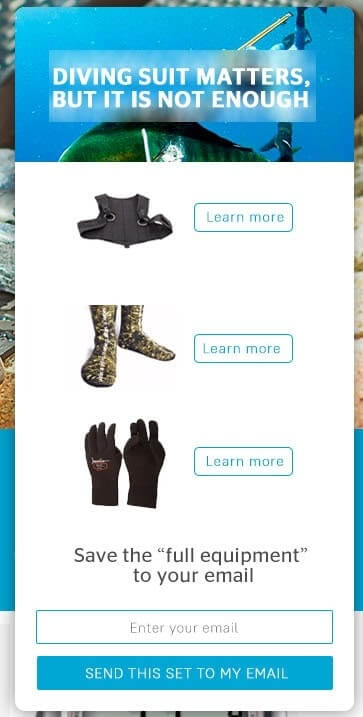
A user opens a product page
Let’s say a user is interested in a product but they still doubt if they should buy it. You can suggest a complementing product to encourage their purchase. Make sure they will find your suggestion useful.
Suggest products that fit each other. Products merged in bundles are perceived as more valuable. Specify what a customer will save if they buy a bundle, and offer them free delivery.
Vlastah reminded of products viewed in a pop-up and offered free delivery on all orders over $100:
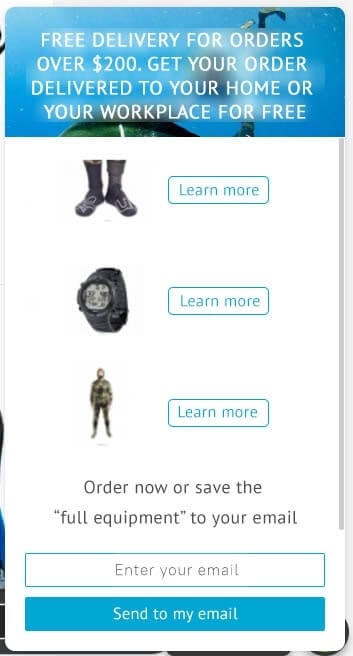
An online flower shop offered theater tickets as a gift for your order. That’s a nice bonus and a reason to ask your partner out for a date. The conversion rate to payment increased by 17%, and the shop generated an additional $800 during the first three days. That’s $24k of additional monthly revenue.

A user adds a product to a shopping cart
When a user adds a product to a shopping cart, it means they are ready to buy. Cross-selling to these customers is easy. You can offer them a promo code, discount, a gift, or free delivery.
Visitors of the “Art for introvert” website who added a lecture ticket to cart saw a small pop-up offering to invite friends for a discount.

The online store “Mnogosna” launched a pop-up offering a bonus if a user adds products to a shopping cart. When a customer clicks “I’m in!”, they have 30 minutes to complete their order. This helped increase the conversion rate to order by 11%.
L’oreal launched triggered live chat messages on websites of their brands: Armani Beauty, YSL Beauty, and Shu Uemura. They are also called chat invitations. Their major job is to engage users in a conversation. If users added products to shopping carts, abandoned them, or removed products, they saw an offer with a discount, a gift, or free delivery.


A user places an order
After an order, our major task is to make sure a user gets back and buys again. Send an after-purchase email to see if they are content with their order, share your news, or suggest stocking up. Engage customers to interact with you and encourage them to order again.
The EuroCase online store emails accessories that can complement orders:
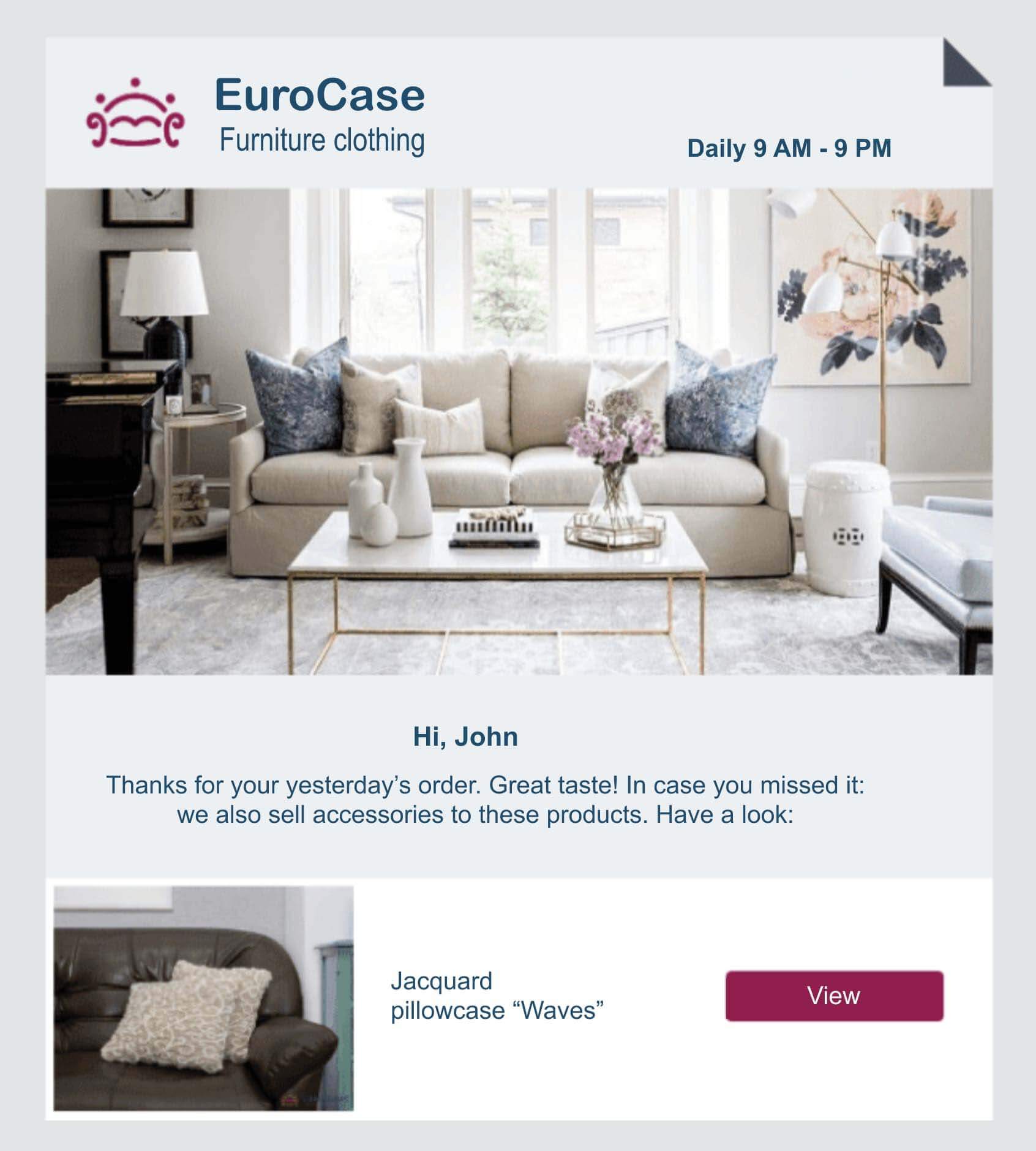
That’s an email that a сoffee shop sends a week after the order. They tell about their loyalty program, suggest inviting friends, and insert a remarkable CTA button “Order freshly roasted coffee”.
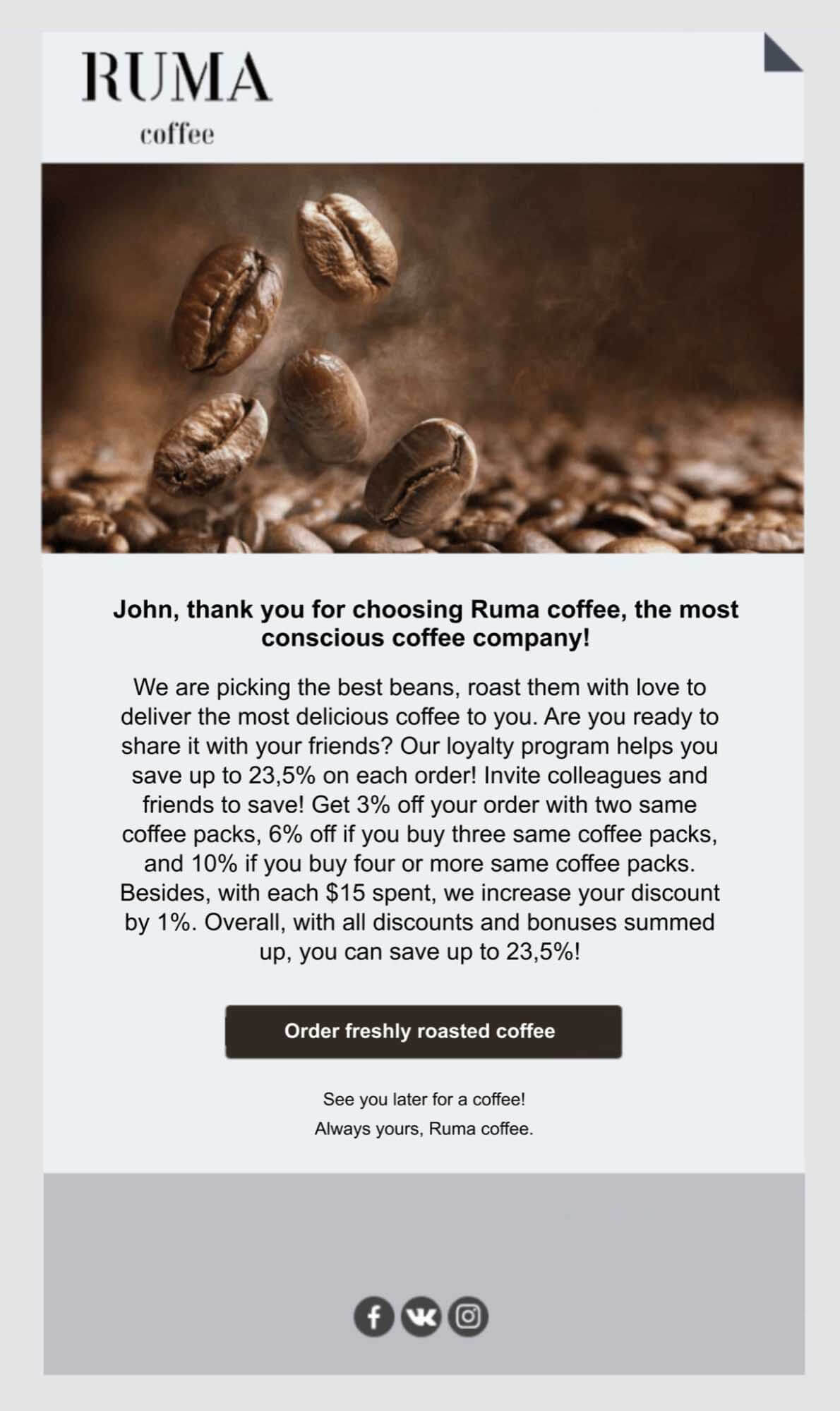
Each tool is special. Pop-ups are good at catching attention, but users only see them on your website. If they close it, they can forget about your offer. Emails are good because they are stored in the user’s inbox and they can get back to it
FAQ
What is cross-sell?
Cross-sell is a way to increase the AOV. It means suggesting a product to a customer that will complement the one they already bought.
What is upsell?
Upsell is a technique meaning that you suggest more expensive alternatives to a product your user chooses.
How should upsell and cross-sell be used?
- Work out your sales funnel. Consider the user stage in terms of their interaction with your brand. Tailor tools depending on their stage.
- Know your audience — this will help you offer products that your customers need. Collect data on your users and their actions and segment users based on what you get.
- Set up your tools — they can be product recommendations, triggered live chat messages, chatbot, pop-ups, and email campaigns. Your tools may vary depending on the user stage of the funnel.
| The article was first published on October 5, 2017. On May 17, 2021, we updated this. |
Read also: 20 AI sales tools: Boost your sales strategy with revolutionary technologies



